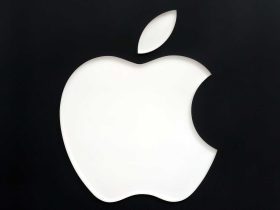The following segment was excerpted from this fund letter.
Webster Financial Corp. (NYSE:WBS)
Webster Financial Corp. was one of our detractors this quarter, falling 13.4% to finish at $43.59, recovering a bit into quarter-end off its June 15th low of $39.34. We see tremendous value and neglect in the shares of WBS, as investors have pushed out their rate cut hopes, worried about commercial real estate and, in our view, have not done a deep dive into WBS’s credit strength, its diversified deposit strength, or what could be a valuation catalyst in its HSA Bank division.
We see Webster as having tremendous financial strength. Webster has a 10.5% CET1 ratio, well above the 6.5% CECL minimum requirement. Moreover, this level is temporarily depressed due to the just completed acquisition of Ametros Financial Corp. WBS is targeting to rebuild its CET1 ratio to 11% in the near-term. Webster also remains very profitable, with a Bloomberg earnings per share forecast of $5.59 for 2024, and rising to $6.27 in 2025, even with slightly higher reserve building levels. Webster’s book value as of 1Q24 is $49.07, and has risen at a 9.9% CAGR since 1Q19 while its tangible book value of $30.22 has risen at a 4.3% CAGR since 1Q19. This is strong book value growth in a period where banks have endured significant headwinds, including Covid, Fed rate hikes, and growing loan competition from private credit funds (see our 6/28/24 Linkedin post).
Webster also has what we see as significant business structure strength. At the parent level, its loan-to-total deposit ratio is 84.1%, which we see as protecting against potential modest deposit shrinkage (which we do not expect) while also providing firepower to grow loans. Moreover, the diversity of its deposits is a hidden asset and not a well understood competitive advantage for WBS. Only 71% of its deposits come from its traditional banking activities, with 44% from the consumer bank and 27% from the commercial bank. WBS gets 15% of its deposits from its Healthcare Financial Services unit (mainly HSA Bank) where the cost of deposits is a very low 15 bps. WBS also gets 10% of its deposits from its recent Interlink cash sweep acquisition and projects strong near-term deposit growth (movement to WBS) in the near-term.
We think WBS has a strong Ability To Grow. With only an 84.1% deposit ratio, WBS has substantial room to grow loans, and we note that its footprint along the I-95 corridor between New York and Boston is a very attractive, populous and growing market. WBS forecasts total 2024 loan growth of 5%, accelerating off 1Q24’s 0.7%, while deposit growth is forecast to be in the range of 5%-7%. With $76 billion of assets, WBS also has considerable room to growth before hitting the $100 billion asset threshold, which would increase compliance costs for stress testing, etc. WBS should also see continued strong growth out of its HSA bank (now Financial Services) unit, as HSA’s gain popularity to help consumers manage the rising burden of healthcare costs. HSA’s pre-tax net revenue continued to grow strongly in 1Q24, up 19.2%. Moreover, HSA Bank is the #2 HSA account provider, second to HealthEquity (HQY) and these two leaders continue to consolidate the market.
We see tremendous neglect in WBS as well. First, WBS, like most regional banks, has been shunned year-to-date by investors who were expecting the Fed to cut rates multiple times in 2024, but now have abandoned the bank trade, which they see as a beneficiary of rate cuts. We see this impact as a nonissue for WBS, as it can grow without a rate cut, while also seeing the potential tailwind of rate cuts in 2025 if they should occur.
We also see neglect in the fears around WBS commercial real estate portfolio, as investors have seemingly “shot first without asking questions.” While WBS does have a $20 billion commercial real estate lending portfolio, only $1 billion is in traditional office. None of these loans were on non-accrual status at the end of 1Q24, the loan-to-value (‘LTV’) was 60%, average loan size was $5.6 million and WBS has a $50 million reserve against this book of business. Maturities are well staggered, with $260 million remaining in 2024 and $158 million in 2025. Its rent regulated multi-family portfolio is also well managed. Of the $1.5 billion of loans where rent regulation is over 50%, non-accrual rates are only 0.1%, the LTV is 61%, average loan is $3.5 million and remaining maturities are $99 million in 2024 and $56 million in 2025. While these lending sectors are facing headwinds across the industry, we see WBS’s underwriting strength evident in low current non-accrual levels and well staggered maturities.
We see a compelling valuation opportunity in WBS shares, which closed the quarter at $43.59, down 18.4% from the 12/14/23 high of $53.39. WBS is forecast to earn $5.59 in 2024 and increase earnings to $6.27 per share in 2024, for Price /Earnings ratios of 7.75x and 6.91x respectively. WBS is compelling on a price to book and price to tangible book basis as well, at .87x and 1.41x respectively, especially given the historical growth CAGRs of 9.9% and 4.3% over the last five years.
Our near-term Assessed Fair Value price target for WBS is $60, up roughly 38% from 2Q24 closing levels. This valuation level is under a 10x PE for 2025, which in our view prices in some conservatism for WBS to build reserves if desired. Importantly, any reserve build, in our view, would likely be an income statement impact for WBS, and not a balance sheet issue, and thus we view our PE metrics as very conservative, with upside to a 12x-14x PE ratio if rates are cut in 2025 and CRE fears ebb. Moreover, WBS has the balance sheet strength and the will to keep paying its dividend, which has 3.69% yield.
Lastly, although we don’t incorporate sum-of-the-parts catalysts into our AFV targets, we see significant upside potential and immediate strategic need for WBS to do a 19.9% IPO of its Health Care Financial services segment. HQY, HSA’s largest competitor, trades at a 28.5x PE multiple on this year’s earnings, and it is using its higher priced stock to roll-up smaller HSA competitors. If WBS were to IPO 19.9% of its Health Care unit, it would retain full control of the low-cost deposits, but create a new currency, likely at a significant PE premium to WBS shares, to compete with HQY for acquisitions to grow and defend its market share. Any gain on the sale of these shares would also bolster WBS capital levels, which could be used for share repurchase, reserve building or balance sheet repositioning. While WBS has said it is not an outright seller of this unit, we were intrigued by CEO Cuilla’s comments on the 4Q24 call when he answered the HSA spin/sale question as “we continually evaluate” all lines of business to “maximize economic profit of those business lines and whether or not that happens as a wholly owned activity or joint-venture opportunity”. In our view, where there is smoke and undervaluation, there is fire.1
|
Footnotes 1All financial ratios, statistics, and projections discussed in the Webster Financial (WBS) commentary are sourced from WBS 10-K, Proxy, 10Q filings, company press releases, company public conference calls and webcasts, company slide presentations, RAM discussions with management, Bloomberg, RELL company webpage and Rewey Asset Management proprietary financial analysis and Rewey Asset Management industry due diligence. Historical share price information sourced from Bloomberg. Rewey Asset Management is a registered investment advisor in the State of New Jersey. All information contained herein is derived from sources deemed to be reliable but cannot be guaranteed. All economic and performance data is historical and not indicative of future results. All views/opinions expressed herein are solely those of the author and do not reflect the views/opinions held by RIA Innovations. These views/opinions are subject to change without notice. This material is for informational purposes only and is not a recommendation or advice. Investments and strategies mentioned are not suitable for all investors. No one can predict or project performance, and forward-looking statements are not guarantees. Past performance is not indicative of future results. Investing involves risk, including the loss of principal. Indices are unmanaged and you cannot invest directly in an index. The information and material contained herein is of a general nature and is intended for educational purposes only. This does not constitute a recommendation or a solicitation or offer of the purchase or sale of securities. There is no assurance that any securities discussed herein will remain in the portfolio at the time you receive this report or that the securities sold have not been repurchased. Securities discussed do not represent the entire portfolio and in aggregate may represent only a small percentage of the portfolio’s holdings. Before investing or using any strategy, individuals should consult with their tax, legal, or financial advisor. |
Editor’s Note: The summary bullets for this article were chosen by Seeking Alpha editors.
Read the full article here









Leave a Reply